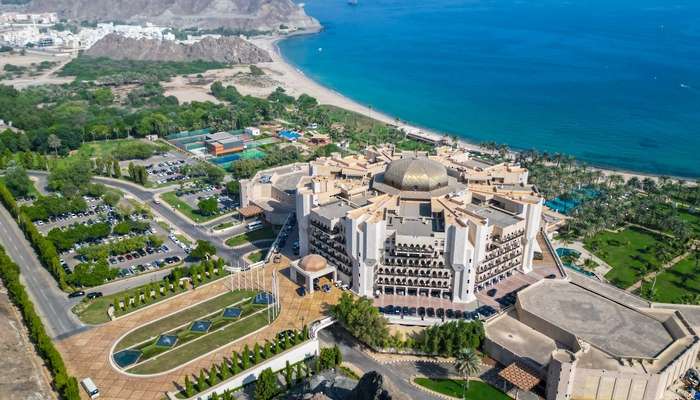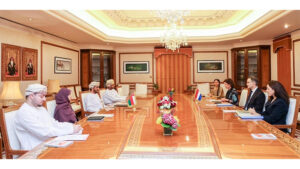Oman’s Tourism Sector Sees Strong Growth in Revenues and Visitor Numbers in 2024

Muscat, The Gulf Observer: The tourism sector in the Sultanate of Oman has witnessed significant growth in financial returns and visitor arrivals, reinforcing its role as a vital pillar of economic diversification and a key contributor to national development.
According to data released by the National Centre for Statistics and Information (NCSI), the tourism sector’s contribution to the national economy rose to OMR 2.12 billion by the end of 2024, compared to OMR 1.75 billion in 2018—marking a growth rate of 3.2 percent. Its contribution to the Gross Domestic Product (GDP) also increased to OMR 2.7 billion, up from OMR 2.3 billion in 2018.
Salim Mohammed Al Mahrouqi, Minister of Heritage and Tourism, emphasized that the robust performance of the sector in 2024—in terms of visitor numbers, spending, and added value—is the result of focused and ambitious strategies implemented by the Ministry. These efforts have helped position Oman as a diverse and attractive tourist destination.
The Minister praised the coordinated efforts of various stakeholders for enhancing tourism infrastructure and services, which have significantly contributed to these positive outcomes. He highlighted the importance of government support for economic diversification and inter-agency collaboration in creating an enabling environment for investment and accelerating tourism development.
Al Mahrouqi noted that the Ministry remains committed to adopting innovative promotional strategies, expanding private-sector partnerships, and enhancing tourism products to meet the expectations of global travelers. He added that efforts to integrate local communities into the tourism value chain are also being expanded, supporting job creation and increasing national workforce participation in the sector.
Further data revealed that total tourism consumption in Oman reached OMR 1.02 billion in 2024, compared to OMR 960 million in 2018. Direct value added from tourism increased by 5.3 percent to OMR 1.09 billion, up from OMR 799.7 million in 2018—demonstrating tourism’s strong links to sectors such as transportation, hospitality, retail, and culture.
In terms of visitor arrivals, the Sultanate received approximately 3.8 million tourists in 2024. Of these, 68.2 percent were overnight visitors, while 31.8 percent were same-day visitors. Total visitor spending reached OMR 989 million, with an average per capita expenditure of OMR 253.8.
The data showed that over 55 percent of international visitors were residents of the United Arab Emirates, highlighting the significance of the Gulf market and the importance of land connectivity. European visitors accounted for 16 percent of total arrivals, followed by 13.2 percent from Asian countries, reflecting the effectiveness of international promotional campaigns in cooperation with Oman’s overseas tourism offices.
Recreational tourism was the primary motive for visits, comprising 70.2 percent of total arrivals, followed by visits to relatives and friends (17.9 percent) and shopping (5 percent). The average stay ranged between 5 and 6 nights, with total tourist nights amounting to 14.8 million—demonstrating Oman’s capacity to attract long-stay travelers through its rich cultural heritage, natural landscapes, and historical landmarks.
Accommodation demand also saw notable growth, particularly in governorates with expanding tourism infrastructure such as Dhofar, Musandam, and Ad Dakhiliyah. Ongoing public-private projects are expected to further increase lodging capacity and enhance service quality.
On the outbound front, the number of departing Omani residents reached 8.1 million in 2024, with total spending estimated at OMR 1.8 billion and an average per capita expenditure of OMR 218.5. These figures underline the scale of outbound tourism and provide an opportunity to strengthen domestic tourism initiatives and encourage the redirection of consumer spending toward local destinations.
As Oman continues to expand its tourism offerings and invest in its infrastructure, the sector is poised to play an even more prominent role in the nation’s economic diversification agenda in the years ahead.


